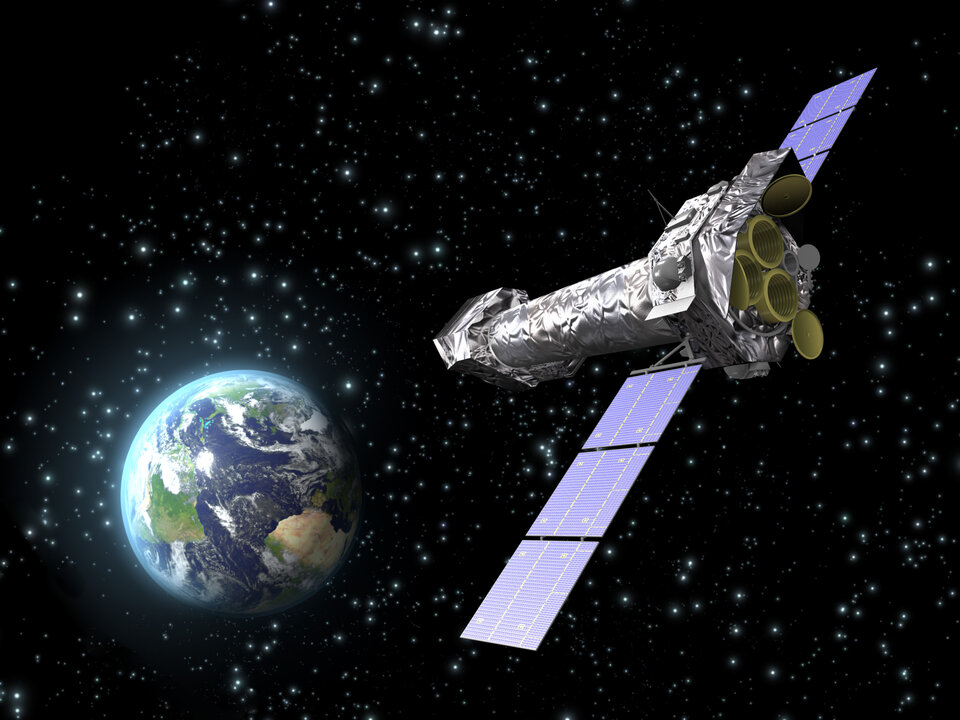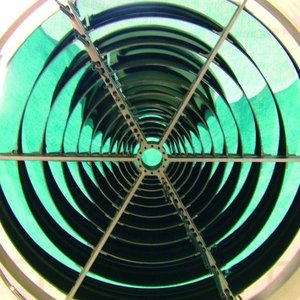XMM-Newton technology on new telescopes
Astronomers gazing deep into the night sky to uncover the Universe's secrets will soon be able to discover even more star-births and planets thanks to new telescopes being built in Chile and Mexico drawing on space technology.

Leading-edge production technology, developed by Italian company Media Lario Technologies for the extraordinary X-ray telescope on ESA's XMM-Newton spaceborne observatory, will be used for both the world’s biggest radio telescope, the Atacama Large Millimeter Array Project (ALMA) in Chile, and the large single-dish Large Millimeter Telescope in Mexico.
“Two of the key requests for ALMA were the precision of the panels and the need not to perform any special maintenance of the panels during the life of the telescope,” explained Michele Suita, ALMA Programme Manager at Thales Alenia Space Italia.
Accuracy better than the width of a human hair

To provide ALMA’s high accuracy and performance, all of the 3000 reflector panels forming the 25 antennas 12 m across that are Europe’s contribution to the giant 66-antenna array are being built using the same precise electroforming technology used for XMM-Newton.
The surface must not deviate by more than 25 microns from the ideal shape and by only eight microns for each of the 120 single panels that form each antenna. A human hair is at least 17 microns thick.
“When the discussion was raised on which technology to use for the ALMA telescopes we proposed to take advantage of our electroforming technology developed under contract with the Italian company Media Lario for our XMM X-ray telescope,” said Kees van 't Klooster from ESA's antennas section.
“We could see that this production technology would provide a very good baseline, so we supported Media Lario in refining this electroforming technology to meet the specific requirements for ground-based millimetre and sub-millimetre wave radio telescopes.”

“The panels developed by Media Lario Technologies were the only ones to fit the bill,” added Mr Suita. Media Lario is now producing the panels under prime contractor Thales Alenia Space Italia for 25 radio-telescope antennas for ALMA.
To meet ALMA’s stringent requirements, studies were performed under ESA's Technology Transfer Programme, with technical support from ESA's antenna engineers and the European Southern Observatory.
Radio astronomy found evidence for Big Bang
Radio astronomy is similar to optical astronomy but uses radio frequencies instead of visible light to detect astronomical objects. Beginning in the 1930s, radio astronomy has found many new stars and galaxies, as well as new objects such as quasars, pulsars and masers. The compelling evidence for the Big Bang theory was provided by radio astronomy.

When ALMA is completed in 2012 its amazing giant array of 66 high-precision antennas will make it the biggest radio telescope on Earth. It will help scientists to study stars, planetary systems and galaxies, and provide insight into star births when the Universe was young.
Media Lario's electroforming production technology was also selected for the 50 m-diameter single dish of the impressive Large Millimeter Telescope now under construction on the summit of the Sierra Negra, at an altitude of 4600 m in Mexico.
Space spurs leading-edge technology developments

The electroforming replication technology developed to produce the exceptional mirrors for XMM-Newton, has led to breakthrough technological advances in several non-space fields. The same space production technology is being used to make smaller, faster and cheaper microchips. (ref: article in link list)
When selected by ESA to produce the mirrors for the XMM-Newton, Media Lario were already known for their ability to realise highly accurate electroformed mirror assemblies. Following the delivery of the mirrors and the stunning X-ray images of our Universe from the space telescope, Media Lario's replication technology has been recognised worldwide.

“The replica technique is extremely interesting when identical highly accurate panels or mirrors are to be produced, such as those required for large-diameter and highly accurate antennas and telescopes,” explained Giovanni Nocerino, Media Lario Technologies President and CEO.
“A circular symmetric main reflector can be realised by a set of rings with a number of identical panels in each ring. The advantage is even greater when many equal antennas are needed, as in the case of ALMA.”

“The key aspects of the ESO-ALMA antenna are the innovative design and technologies applied for the production of the different subsystems to achieve the state-of-the-art requirement of the project,” explained Stefano Stanghellini, ESO ALMA Antenna Project Manager.
“The panels produced by Media Lario Technologies are an additional new design feature of the European contribution to the ALMA array.”
“We have installed, recently, the first six antennas with our prime contractor Thales Alenia Space Italia in Chile, of which the first two will go through acceptance testing until February 2011. The rest of the antennas will then be installed in the course of 2011 and 2012,” added Dr Nocerino.
“This transfer of technology is an excellent example of the potential in non-space fields of our developments for space exploration,” emphasized ESA's Mr van 't Klooster.
ESA’s Technology Transfer Programme Office (TTPO)
The TTPO’s main mission is to facilitate the use of space technology and space systems for non-space applications and to demonstrate the benefit of the European space programme to European citizens.
The office is responsible for defining the overall approach and strategy for the transfer of space technologies, including the incubation of start-up companies and their funding. For more information, please contact:
ESA’s Technology Transfer Programme Office
European Space Agency
Keplerlaan 1
2200 AG, Noordwijk
The Netherlands
Tel: +31 71 565 6208
Email: ttp@esa.int
(text updated 11 March 2011)







